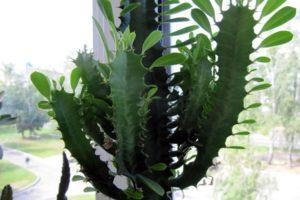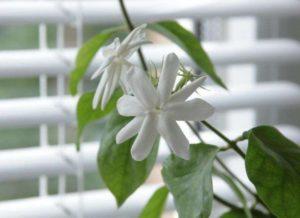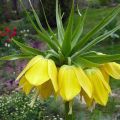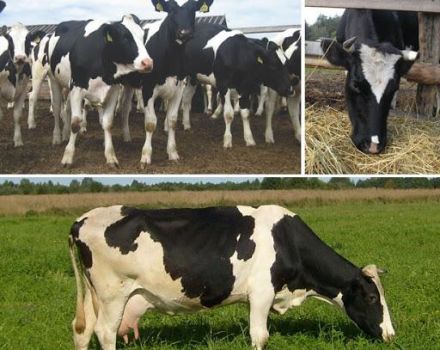How crocus forcing at home is carried out for the New Year and March 8
Crusts are early flowering plants that begin to bloom literally after the snow melts. But you can grow them at home. Forcing crocus bulbs at home will allow you to enjoy these beautiful flowers at any time of the year.
Autumn crocuses
Crocuses bloom not only in spring but also in autumn. Autumn varieties are suitable for forcing for winter, for example, for the New Year.
Albus
The shade of the petals is white, near the pistil there is a cream border. Plant height ranges from 10 to 15 cm. The variety is quite winter hardy.
Artabir
The petals at the inflorescence are of a sky-blue hue, in the center the petals are covered with dark blue veins. A tall variety, the stem grows to a height of 20 cm. Flowering begins in the second decade of October.
Sollux
Inflorescences of a blue shade with a purple tint. The inflorescences have a pleasant rich aroma. The flowering period begins in early September.
Sowing
The height of the plants is 10-13 cm. The color of the inflorescences ranges from lavender to deep purple, about 7 cm in diameter. It begins to bloom in mid-September.
Crocus Sharoyan
A tall variety, up to 20 cm high. The petals are rich yellow. This color of petals is rarely found in autumn flowering varieties. The flowering period is from September to October.
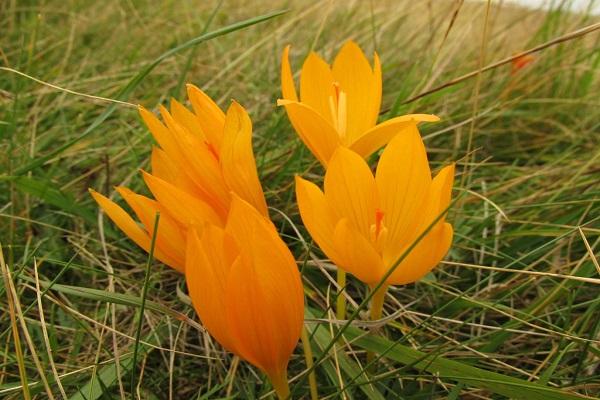
Spring crocuses
Spring crocus varieties begin to bloom immediately after the snow melts. At home, plants are used for forcing by early spring.
Alexander
The shade of the blossoming petals is white-silver. The reverse side of the petal is snow-white. It begins to bloom in early spring.
Crocus tomasini
The height of the stems of this variety reaches 20 cm. The shade of the petals ranges from rich purple to lavender. The flower blooms in April.
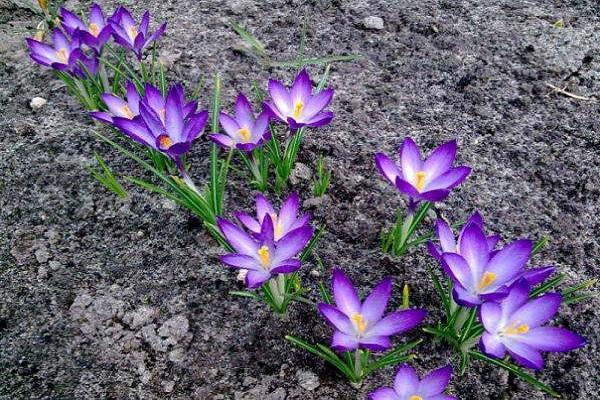
Marietta
The petals of the inflorescences are light yellow, sometimes lemon-colored. Outside, the petals have brown stripes.
Pickwick
Inflorescences are white with a gray tint. The petals have dark purple stripes.
Prince claus
This variety has an unusual shade of petals. The inflorescences are of a snow-white shade, and near the pistil there is a purple border. The height of the stems is up to 10 cm.
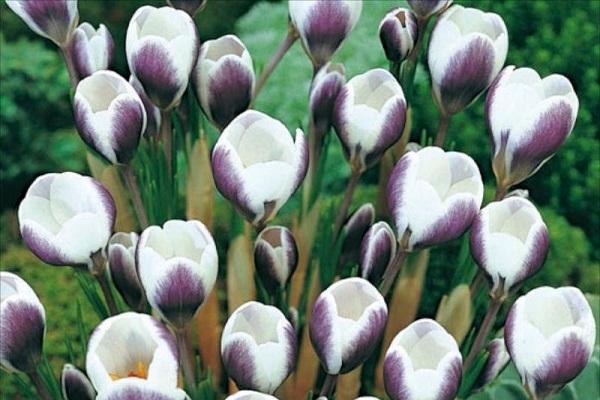
When and how to start forcing
You can start forcing crocuses at any time, depending on when it is necessary for the plants to bloom. When choosing a start date for distillation, it should be borne in mind that this process is not the fastest and therefore it is better to choose a date with a margin. The forcing process takes approximately 3-4 months.
Before proceeding with the procedure, you should study all the nuances. Although forcing crocuses is not very difficult, there are nuances and pitfalls that you should know about in advance. First of all, you need to know that different varieties react differently to forcing. Late varieties will be difficult to force to bloom by the New Year, and early varieties by early spring.
Benefits of distilling a plant by a specific date
The main advantage of forcing a flower is that the plant will bloom by the date that was planned. Although, of course, there can be no exact guarantees, but if all the conditions for the procedure are observed, the flower will bloom on time and without any problems.

How to prepare and create conditions for forcing crocuses for the New Year
In home indoor conditions, you can make crocuses bloom by the most magical holiday - the New Year. This night I want a little fairy tale, and what could be more magical than spring flowers blooming in winter. As if in a fairy tale 12 months.
We prepare the corms
The first step is preparing the bulbs. Forcing planting material implies creating conditions in the apartment as close as possible to natural ones. If you use bulbs from the site, dig them out in June-July. After digging, the bulbs must be sorted and dried.
In the first week after digging, the bulbs are kept at a temperature of +30 degrees. Then the temperature in the room is constantly lowered until it becomes +17 degrees by mid-August. After that, the bulbs are placed in a room with a temperature of + 3 ... + 8 degrees. A refrigerator will do.

If purchased bulbs are used, then they have already been dried, so all that remains is to harden them and start planting.
Pot selection
The capacity for planting bulbs can be any, as long as it is spacious. It is advisable to choose pots with holes in the bottom to circulate oxygen in the soil. Most suitable for forcing crocuses are ordinary plastic flower pots.
Landing time and rules
On average, forcing the bulbs takes 90-100 days. If you count, then in order for the crocuses to bloom by the New Year, they need to be planted around September-October. But again, it's not a fact that crocuses will bloom by New Year's Eve. Estimated date.
Light fertile soil with neutral acidity is suitable for planting crocuses. To keep the bulbs healthy, drainage is poured onto the bottom of the pot, then a layer of soil and a thin layer of sand on top. Bulbs are planted in it. Then cover the bulbs with sand to the top.
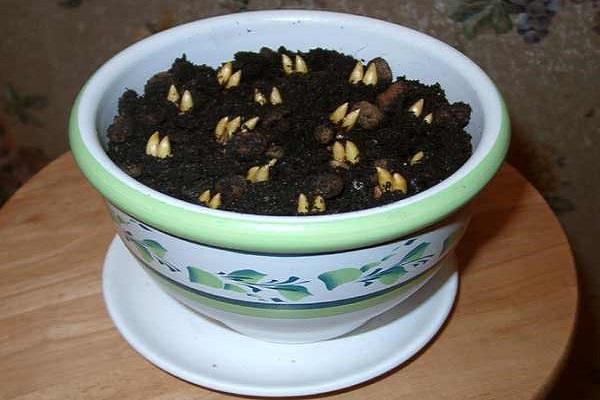
Prerequisites: lighting, humidity, temperature
For successful forcing, you need to create favorable conditions for growth, choose the right lighting and temperature at which the crocuses will quickly enter the growth phase.
Temperature range:
- The bulbs should be at a temperature of +30 degrees for the first week after digging.
- The next 2 weeks - at a temperature of +20 degrees.
- Until August - at +17 degrees.
- Before disembarkation - at +8 degrees.
- After planting the bulbs, the pots are moved to a dark room with a temperature of +3 degrees for 15-16 weeks.
- After the sprouts appear, the temperature should be +10 degrees.
- Then it is increased to +17 degrees.
The rooting period corresponds to winter. The later you plan to bloom crocuses, the more bulbs should be in the cold and dark.
Sprouted crocuses are placed on the sunny side and wait for their flowering. It is not recommended to abruptly bring the pots into the heat; the temperature should be raised gradually.

Watering and feeding
The bulbs do not need irrigation or fertilization during drying and cooling. Watering crocuses begins after the bulbs are planted in the ground. It is undesirable to flood the bulbs too much, just moisten the soil. The best way to water the bulbs is through a tray. You need to feed the plants if the bulbs are planted in the sand.
Forcing culture by March 8
By spring, crocuses are driven out in the same way as in winter. The only difference is the timing of the landing. They move several weeks.
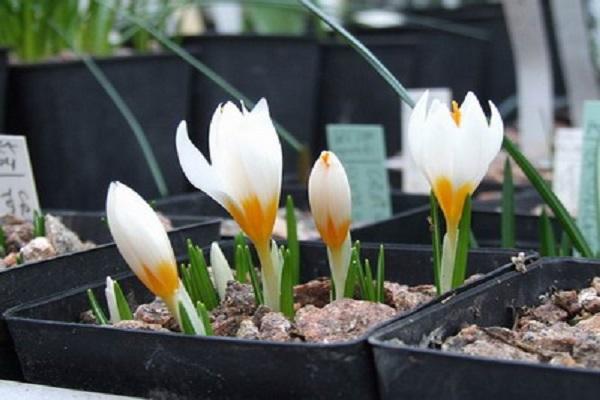
How to select planting material
For forcing crocuses, it is best to use healthy, large bulbs with no signs of damage. Bulb babies are not suitable for this purpose, nothing will grow out of them, because the bulb is still too small. It is best to leave it outdoors for planting. In the first year, even on the street, it is unlikely to bloom.
Planting crocuses for distillation
By March 8, the period for distillation falls on October-November. For planting, use such a substrate, as in the case of winter forcing. Basically, the process isn't much different.
During planting, some people prefer not to deepen the bulb and leave it on the surface for about half. Only with such a planting of planting material can crocuses grow in curves. The bulbs are planted in a common container. Planting material can be planted close to each other.

Attaching crocuses
Attachment is a process when, after planting, the bulbs are placed in a warm room and the temperature is gradually raised so that the bulbs start growing. The attachment takes place at a temperature of + 15 ... + 17 degrees. The temperature is raised within 2-3 days after the pots are placed in the sun.
During the attachment phase, the soil is constantly kept moist. It is not necessary to feed crocuses, unless you plan to transplant them into open ground after flowering. In this case, mineral dressings for bulbous plants are added to the soil after transferring the pot to heat and after flowering.
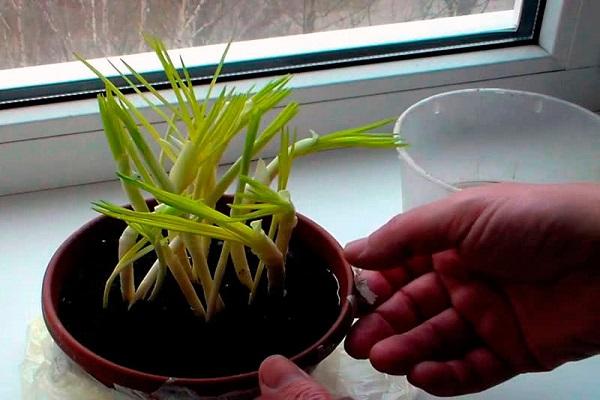
What to do with crocus bulbs after distillation
After the plants have bloomed, the inflorescences are cut off so that the bulb does not waste nutrients on seed formation. They also reduce the amount of watering. When the greens wither, they cut them off, and the bulbs are dug up. Then they are stored in the same way as before forcing. They are then planted either in open ground or used again for re-forcing.
